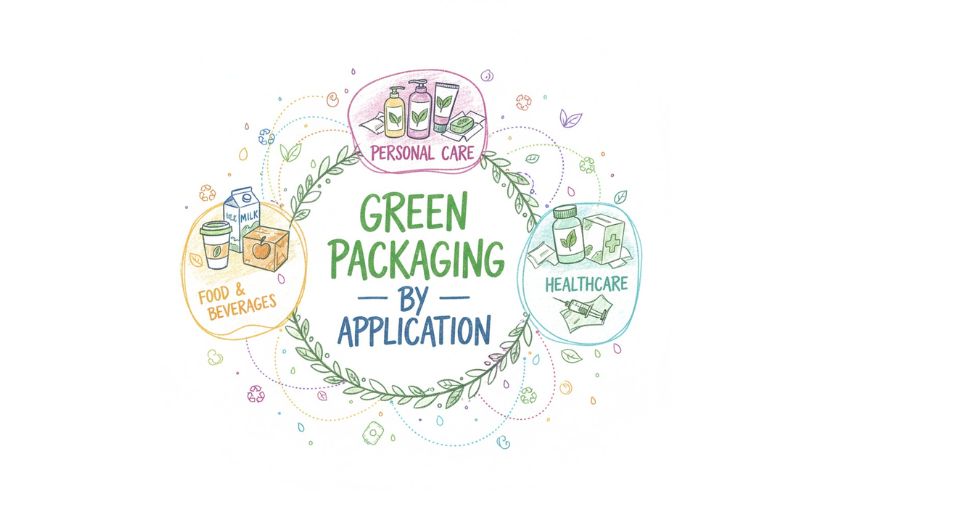
Nov 05, 2025

In a planet that is becoming more and more aware of environmental impacts, the global green packaging market that is examined by Metastat Insight has revealed to be one of the big changes. Packaging has simply a container no more but a part of brand identity, sustainability, and resource efficiency from retail shelves to e-commerce deliveries. Consumers and businesses together pushing for less waste, less plastic, and more recyclability have given this market greater importance.
Market Context: Rising Pressure and Opportunity
The environmentally unfriendly packaging methods are under great pressure: the regulations on plastic waste, the consumers' negative attitude towards single-use materials, and the supply-chain risks concerning virgin raw materials. The very same challenges give rise to the alternatives that have an environmental impact lower than the traditional one at the same time meeting the requirements of modern brands for protection, shelf-life and aesthetic performance. With sustainability being a consideration at the highest level in the company, the packaging industry has to change its ways – and the green packaging sector is seen as a practical enabler for that change.
How It Works / Why It’s Valuable
Green packaging solutions bring value in various ways. They include the use of recycled content, compostable or biodegradable polymers, reusable packaging and packaging made for circular life-cycles. These solutions still offer the protection and branding functions of traditional packaging, but at a lower environmental cost in terms of energy and waste and in compliance with the changing legal and social expectations. For brands, the benefit is not just in being on the right side of the law but also in being attractive to consumers, having a unique place in the market, and being operationally tough. The range of applications goes from rigid beverage containers made of recycled aluminum to flexible food pouches made from plant-based films, covering food & beverage, personal care, healthcare, and even more.
Market Evolution
The use of green packaging technologies started as a small trend that was only liked by the eco brands that were first to adopt it. But later on, it became a practice widely accepted due to the regulatory requirements, cost concerns, and improvements driven by large scale production. Material science innovations like bioplastics, advanced recycling, and cellulose-based films along with manufacturing processes like lightweighting and mono-material design have made the proposition stronger. Mergers, partnerships, and industry collaborations have made it possible to integrate the supply chain of sustainable packaging formats. What was once seen only as a marketing strategy has now become a strategic packaging option for companies across different sectors.
Regional and Global Trends
Europe has managed to become a regional leader due to its enforcement of aggressive legislative initiatives and already existing good recycling systems. Meanwhile, the Asia-Pacific market is working its way up to becoming one of the fastest markets, very much so because of the upcoming consumption, increasing awareness, and the government's investment in infrastructure in countries like India, China, and South Korea. North America is still the main area for consumer-oriented demand and brand-led initiatives, while Latin America, the Middle East, and Africa are the Challenges and Opportunities.
This market has a strong momentum but still, it has to deal with some hurdles: the price of sustainable materials is usually higher than that of the traditional ones; the recycling and composting infrastructure are not the same everywhere; the standardisation and certification of novel materials are behind; and the complexity of the supply chain increases when new formats are introduced. On the other hand, there are plenty of opportunities: the demand for e-commerce packaging is increasing, more and more corporations are setting net-zero and sustainability targets, closed-loop recycling technologies are getting better, collaboration with lightweighting and smart packaging is happening, and new business models like refills and reuse systems are now being considered, which all together expand the playing field.
Why It Matters Now
Today’s ecosystem places packaging at the intersection of digital transformation, sustainability imperatives and consumer experience. The global green packaging market presented by Metastat Insight enters this moment as more than a niche alternative, it is a key lever in how brands and supply chains respond to climate targets, resource scarcity and shifting consumer priorities. Its role in reducing waste, enabling circularity and shaping packaging design choices makes it a central component in how industries will rethink packaging for the coming decade.
Drop us an email at:
Call us on:
+1 214 613 5758
+91 73850 57479